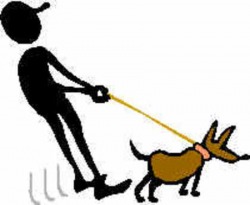Are you going overseas, but your pets will have to remain at home? Pet sitting is one option for you as a pet owner.
What is in-home Pet Sitting?
A Pet Sitter is used when you or your entire family will be away from home (holidays, vacations, trips) but your pets are left at home alone. Pet sitters will go to your house and take care of your pets. A pet sitting service could include feeding, playing with your pets, walking your dog, cleaning up of the potty area, watering your plants etc.
Why use a Pet Sitter vs Pet Hotel?
There are many advantages of using a trust worthy pet sitter versus placing your pets in a pet hotel. You would have to decide which is more suitable for your situation!
- Your pets do not have to travel to and fro the pet hotel or pet boarding place. Some pets travel badly, some pets have separation anxiety and would not enjoy staying in a strange place. They stay put right at home, and we go to them!
- No exposure to possible diseases or viruses from other animals. In pet hotels or pet boarding services, many other pets have been in and out of these places. Many places do not and are also unable to fully disinfect or sanitise their areas after every pet. For frail, weak or sick pets, they might need isolation from other animals.
- Their regular and daily routines can be maintained. No need for them to switch to a strange environment, especially if your pet is on medication or is not good with changes and other animals. Just specify what you need to be done, and we will take care of it 100%.
- Less stress on your beloved animals. They get to stay in their usual, comfy homes.
- Any domestic pet can benefit from pet sitting. We follow your instructions and routine. Many pet hotels and pet boarders do not accept every type of animal. Sometimes, due to breed types, your pet may be refused too.
Types of Pet Sitting Services
Daily quick visits: We will go to your home to follow through your instructions (feeding, walking, playing etc) for a pre-agreed number of hours every day. Your pet’s daily schedule and routine can be followed without any changes to feeding time, sleeping time etc. You would have to prepare a list of tasks and the timings to carry it out.
Overnight stays: On top of taking care of your pets, the pet sitter will also stay overnight at your place. This is similar to house sitting, and allows for much more interaction and contact hours compared to quick visits. It would also mean that someone is looking after both your house and your pets at the same time!
K9 Pet Care provides pet sitting services in Singapore, so go ahead and travel while we ensure that your home is taken cared of!
Read more from:
Wikipedia: Pet Sitting / Pet Sitters
 Boarding kennels can be a fun and exciting time for your dog while you are away. Especially if your boarding kennel has employees that are experienced and trained dog handlers who are as passionate about dogs as you are.
Boarding kennels can be a fun and exciting time for your dog while you are away. Especially if your boarding kennel has employees that are experienced and trained dog handlers who are as passionate about dogs as you are.